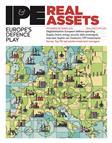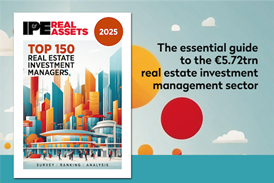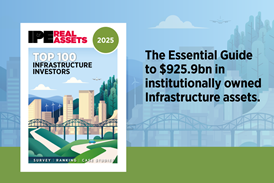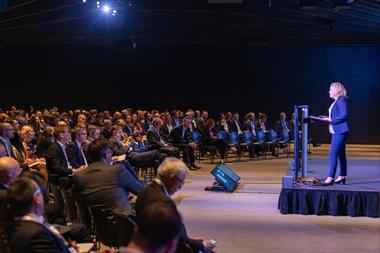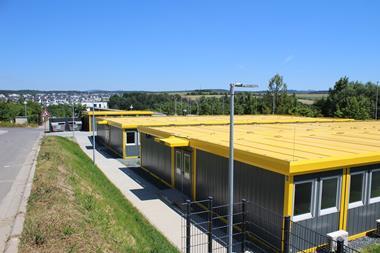Amid the uncertainty and volatility in the US, real estate fund managers are beginning to report a shift in global sentiment away from North America and early signs of capital reallocation to European real estate markets. A live poll at the IPE Real Estate Global Conference & Awards in Copenhagen revealed that more than three quarters of the audience would prefer to reduce their target allocation to the US and increase it to Europe.
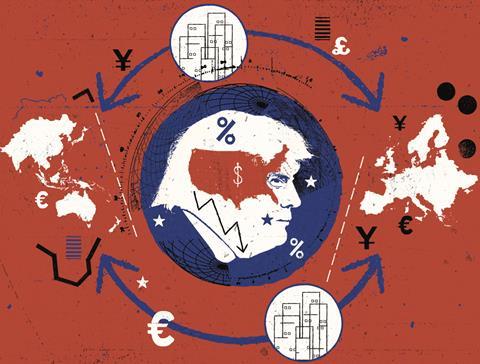
The question now is whether that sentiment will start to filter through to investment decision-making.
Richard Gwilliam, head of research at M&G Real Estate, believes that, in a climate of heightened volatility emanating from dramatic and erratic US policy announcements, the relative resilience and clarity emerging from Europe are becoming “hard to ignore”. He says: “For investors wary of catching a falling knife stateside, Europe increasingly looks like a safe haven.”
M&G is already seeing “early indications” that the uncertainty in the US is prompting investors to reassess risk and recalibrate allocations. Gwilliam says: “The volatile political backdrop, coupled with mixed signals on inflation and growth, is driving a more cautious sentiment, which in many cases is encouraging diversification into real estate markets perceived as offering greater stability, such as Europe. We expect this trend to become more evident over the coming quarters.”
Current evidence of a shift of capital is only anecdotal and minor in nature. For example, one of M&G’s long-standing investors recently completed a reapproval process across all its real estate manager relationships. Notably, it chose to renew its non-US mandates while holding back on its US allocations. “ESG considerations were cited as a key factor in that decision, highlighting how policy alignment has the potential to influence capital flows,” Gwilliam says.
In another case, a DWS client has decided to make three investments in Europe this year and only two in the US, compared with three investments in the US and two in Europe last year. A Japanese investor is now looking with increased interest at several European cities, whereas it would have focused on the US in the past, according to Simon Wallace, head of UK real estate and global co-head of real estate at DWS. “Investors are not saying we won’t do the US right now – they are just being more cautious about the US,” he says.

In some cases, it is not just European or Asian investors looking to reallocate capital to Europe. As Brian Klinksiek, global head of research and strategy at LaSalle Investment Managers, says, asset managers are having “more conversations with US investors about Europe and Asia, and less conversations about the US with European and Asian investors”.
Some US institutional investors, including the large California public pension plans CalSTRS and CalPERS, were recently said to be considering globalising their property portfolios. “Previously, US investors favoured domestic opportunities driven by anticipated tax cuts and deregulation, a view shared by many European and Asian investors. Now, with US policy direction unclear, investors are seeking diversification and stability in Europe,” says Marcus Meijer, CEO at European real estate investment manager MARK Capital Management.
The firm is seeing increased interest from US investors in European real estate, particularly in its urban logistics and residential-for-rent strategies. “These sectors offer strong value creation due to favourable supply-demand dynamics and lower institutional ownership compared to the US. Our discussions with US investors highlight much enthusiasm for the growth potential in these asset classes.

Meijer is expecting a net inflow of capital into European real estate from US investors over the next six to 12 months, owing to the euro-zone’s positive growth outlook, combined with favourable currency movements and attractive valuations. “Sectors like residential-for-rent, urban logistics and infrastructure, with strong fundamentals and lower institutional ownership than the US, are particularly well positioned to attract investment,” he says.
When they venture outside their home market, US investors typically seek higher-risk, higher-return opportunities, and this year is shaping up to be a compelling vintage for value-add real estate strategies in the UK and Europe, adds Gwilliam. “With growing macro uncertainty at home, as well as structural challenges, particularly in the US office sector, Europe offers a comparatively attractive backdrop for putting their capital to work.”
Regardless of the situation in the US, it is Europe’s fundamentals that are drawing investors from across the globe, says Wallace. “Europe is looking attractive in its own right,” he says. “We’ve got a real estate market where fundamentals are excellent at the moment and in the early stages of recovery, and the German government is about to embark on a huge amount of fiscal stimulus which will reshape growth expectations.”
US investor Heitman believes that Europe certainly has the potential to “step up in these volatile times”. Historically, there has been a high degree of continuity and certainty in European policy-making, with the governing bodies providing an overall framework of stability and predictability, says Zubaer Mahboob, senior vice-president in Heitman’s investment research group.
“These advantages have continued even as European growth has lagged the US, and even as armed conflicts have broken out in its periphery. Recent fiscal policy decisions by Germany and others will have the significant impact of boosting the growth outlook for Europe. And most importantly for investors, certain sectors in Europe are still at an early stage of development and as a result they offer the opportunity to deploy long-term capital at scale.”
Is there an effective substitute for large US office assets?
Data suggests that a drop in cross-border investment in the US was already under way before US President Donald Trump took office. According to data from MSCI, cross-border direct investment into US commercial real estate dropped from 12% in 2019 to 6% last year. “Even before the US turmoil, cross-border investment had plunged and part of this drop was because the opportunity set was not as compelling for investors, prices were still falling despite a moderation of declines and the office market remained challenging,” says Jim Costello, who co-heads MSCI’s real assets research team, with responsibility for the Americas.

The US office sector has historically been a big component of the investment market globally and used to attract large amounts of cross-border capital which is now having difficulties being re-directed into other real estate asset classes. “Previously, one could never go wrong to invest $1bn in an office in Manhattan, but today with a lot of uncertainty still surrounding offices, institutional money has been rotating out of offices into industrial,” says Costello. “However, the problem is that lot sizes are much smaller, and granular portfolios are difficult to assemble and manage remotely.”
The challenge for a number of cross-border investors is that the US is by far the single largest pocket of investible real estate worldwide and there are only so many alternatives, adds Costello. “If that capital does not flow to the US, will it back up in the country of origin, thus pushing up asset prices more at home or will investors allocate more to other asset classes outside of commercial real estate? Or maybe will it drive some investors towards the [listed] REIT market where liquidity and the ability to exit is higher compared to private markets? There is not a black and white answer.”

While only the coming months will tell whether global investors’ reallocation will occur and be significant in nature, what is certain so far is that there is a broad, meaningful cost to uncertainty. According to those who track the market, tens of billions of dollars of fund commitments were recently cancelled at the final paperwork phase as a result of market turmoil. “It is just hard to invest at the moment,” says Costello.
Klinksiek says: “Uncertainty is having at least as much impact on sentiment [as] policies. It has paused decision-making for a number of investors.”
Investor surveys published since the start of 2025 – including this year’s survey by IPE Real Assets – have consistently cited geopolitical risk as the chief concern for property owners and investors, notes Mahboob. “Owners and investors tend to value policy certainty, and frequent changes in policy make it harder for them to commit to long-term investment decisions. Investor caution has become apparent in Q1 European real estate investment volumes. The market had started to build up some momentum coming into the new year – the mantra last year being ‘survive till 2025’ – but Q1 2025 transaction volume data showed that momentum had stalled.”
Ronald Dickerman, president and founder of US group Madison International Realty that specialises in “liquidity solutions” for real estate investors globally, agrees that a large number of investors are waiting for the dust to settle after Trump’s tariff frenzy. “It is an unprecedented period for fund managers to navigate,” he comments. “There is so much volatility. I think nobody has seen a time where the dashboard was spinning as fast as now.”

